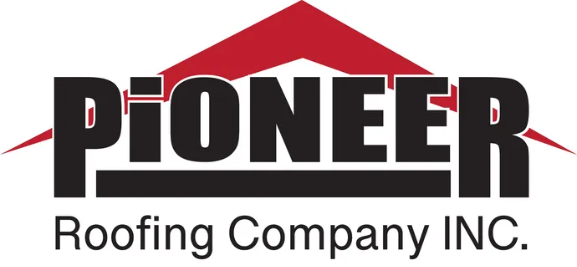Quality Commercial Roof Systems from Pioneer Roofing Company Inc.
The Most Common Commercial Roofing System—TPO Roofing
What is TPO Roofing? TPO stands for thermoplastic polyolefin. It’s a synthetic rubber compound. Unlike other rubber compounds used in the roofing industry, it possesses the ability to be fused together like a plastic PVC membrane over its life. Most other (EPDM) rubber membranes are seamed together using either 2-sided tape systems or an adhesive.
- Great Value
- Excellent Seam Strength
- Long-Term Weathering
- Energy Saving
Everguard TPO 60MIL membrane is suitable for all types of single-ply systems. Mechanically attached applications for a quick and cost-effective system that can be installed practically year-round.
- Rhinobond Application—Can Be Applied Without Using Adhesives and Installed Practically Year-Round Qualifies for the Same Guaranteed Length as an Adhered System.
- Adhered Application—Can Be Installed With Everguard 1121 Bonding Adhesive (Solvent-Based) Everguard Low VOC Adhesive, or Everguard WB181 Bonding Adhesive (Water-Based) for the Smoothest Appearance
TPO Roofing: Everything You Need to Know
If you’ve seen a bright white roof, then you may be familiar with TPO roofing. As one of the most common roof types of big commercial facilities, TPO has some of the best energy savings for single-ply membrane roofing! Here at Pioneer Roofing, we’ve been installing single-ply membrane roofing for over 40 years. In this article, we cover everything you need to know about TPO roofing.
Single-ply membranes are sheets of rubber and other synthetics that can be ballasted, mechanically fastened, or chemically adhered to insulation, creating a layer of protection on your commercial facility. While single-ply membrane roofing is one of the most well-known types of commercial roofing material, there are several types to fit your budget and facility needs. There are two main types of single-ply membrane commercial roofing: Thermoplastic Polyolefin (TPO) and Ethylene Propylene Diene Terpolymer (EPDM). They differ in their chemical makeup, how they are installed, and their energy efficiencies.
Additional TPO Information
Thermoplastic Polyolefin is a single-ply roofing membrane that is one of the fastest-growing commercial roofing systems on the market. TPO roofing systems are made up of a single layer of synthetics and reinforcing scrim that can be used to cover flat roofs. TPO membranes are manufactured in sheets that are 10, 12, or 20 feet wide. These sheets are then rolled up and taken to the commercial facility. TPO has gained industry acceptance with its natural reflective surface to reflect UV rays. As reported by the National Roofing Contractors Association (NRCA), TPO takes up about 40% of the commercial roofing market share.
Modified Bitumen Roofing
One of the longer-lasting roofing options for flat roofs is bitumen roofing or a modified bitumen roof. Modified bitumen is a type of asphalt product that can be applied in several ways to the roof in both hot and cold temperatures. Modified bitumen roofs have a lot of advantages over other types of membrane roofing, and we are often seen as the modern alternative to the built-up roof.
Modified Bitumen Roof—Advantages
There are several different advantages to using a bitumen roof on your building or home. Unlike some newer types of roofing, it has a long, proven track record that can be counted on. Bitumen roofs are one of the longer-lasting types of flat roofing materials, easily lasting 20 years or more.
Regardless of how the material is applied (self-adhesive sheets, hot-mopped asphalt, or cold-applied adhesives), the seams are usually melted together, which helps stop leaks. Other types of membrane roofing have seams that are left open or covered with another material that can weaken over time, so the fact that a bitumen roof can be seamless is a big advantage.
Bitumen roofs are also very durable. They have a high tensile strength, so they are unlikely to develop the kinds of cracks that other flat and membrane roofs are known for. They are also rated against wind, fire, and hail, so they are unlikely to be damaged in the event of a storm. Included in this is usually a very long manufacturer’s warranty that can help to guarantee the roof’s longevity.
Modified Bitumen Roof—Disadvantages
Like all roof types, a bitumen roof does have some drawbacks. The first is their black color, which can absorb rather than reflect heat. While the material itself may not be damaged by heat or UV rays, if proper insulation is not used with it, this absorption of heat can lead to superheating of the building below.
Bitumen roofing is also available in 1, 2, or 3-ply. The 1-ply material is not durable, and if used, it can pose certain problems such as breaking down prematurely, while the 2- and 3-ply material roofs cost significantly more to install, which can make this one of the most costly types of flat roofing products around.
Granules need to be included as part of the installation process to help protect the roof from the sun. If they are not included, this can further raise the temperature of the building or damage the roof. Unfortunately, not all types of bitumen roofs include granules as part of the installation process.
Finally, if your roof is likely to hold a lot of water or to gather puddles of standing water after rainstorms, this can prematurely age and damage the bitumen roof.
KEEP YOUR BUSINESS PROTECTED BY CONTACTING THE ROOFING EXPERTS AT PIONEER ROOFING COMPANY INC.







